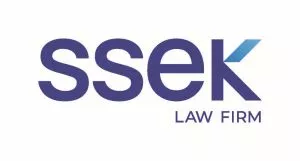- within Energy and Natural Resources topic(s)
- with readers working within the Accounting & Consultancy industries
- within Energy and Natural Resources, Environment and Consumer Protection topic(s)
On September 11, 2025, the Indonesian Minister of Industry issued Regulation No. 35 of 2025 regarding the Provisions and Procedures for the Certification of Domestic Component Level (Tingkat Komponen Dalam Negeri or "TKDN") and Company Benefit Weight (Bobot Manfaat Perusahaan or "BMP") ("MOI Reg. 35/2025").
This new regulation replaces and updates the longstanding framework under Minister of Industry Regulation No. 16/M-IND/PER/2/2011 concerning Provisions and Procedures for Calculating Domestic Component Level ("MOI Reg. 16/2011"), which had been in place for more than a decade and was increasingly viewed as no longer adequate to address the fast-changing and competitive needs of industry.
The Minister of Industry, Agus Gumiwang, stated that the reform was part of Indonesia's broader deregulatory agenda aimed at reducing trade barriers, facilitating investment and strengthening the domestic industrial ecosystem. He emphasized that the overhaul of TKDN rules was driven by the urgent need to modernize a regulatory framework that had stood unchanged for more than 14 years. The goal is to ensure that TKDN genuinely reflects local contributions, empowers domestic enterprises and enhances Indonesia's competitiveness in an increasingly integrated global economy.
In addition to repealing MOI Reg. 16/2011, MOI Reg. 35/2025 formally revokes a series of other related regulations, as follows:
- Minister of Industry Regulation No. 2 of 2014 regarding Guidelines for Increasing the Use of Domestic Products in the Procurement of Government Goods/Services ("MOI Reg. 2/2014");
- Minister of Industry Regulation No. 3 of 2014 regarding Guidelines for Increasing the Use of Domestic Products in the Procurement of Goods/Services of the Government Not Financed by the State Budget/Regional Budget ("MOI Reg. 3/2014"); and
- Minister of Industry Regulation No. 46 of 2022 regarding Provisions and Procedures for Calculating the Domestic Component Level Value for Small Industries ("MOI Reg. 46/2022").
MOI Reg. 35/2025 effectively consolidates the revoked regulations into one single framework, and will take effect on December 11, 2025, three months after its issuance.
MOI Reg. 35/2025 applies only to TKDN for (i) goods; (ii) services exclusively categorized as "Industrial Services" within the KBLIs listed in Attachment III of the regulation; and (iii) mixed goods and services.
Attachment III of MOI Reg. 35/2025sets out the following categories of services that are within the scope of the regulation:
- Industrial Design and Construction Services;
- Industrial Equipment Installation and Commissioning Services;
- Industrial Research, Engineering and Design Services;
- Industrial Process Services;
- Maintenance and Repair Services;
- Industrial Management Consultancy Services;
- Certification, Testing, Inspection and Calibration Services;
- Packaging Services;
- Industry 4.0 Support Services;
- Environmental and Sustainability Services;
- Publishing, Printing and Creative Content Services; and
- Performance and Efficiency Support Services.
The applicable TKDN framework for services outside the Industrial Services categories listed in Attachment III of MOI Reg. 35/2025 will continue to be governed by other regulations. For example, for the upstream oil and gas sector, TKDN requirements continue to be governed by Minister of Energy and Mineral Resources Regulation No. 15 of 2013 on the Use of Domestic Products in Upstream Oil and Gas Business Activities ("MEMR Reg. 15/2013"), as further detailed in MEMR Decree No. 232.K/HK.02/DJM/2024 on Guidelines for the Verification of Domestic Component Level and the Qualification of Verifiers of Domestic Component Level ("MEMR Decree 232/2024").
Additionally, the TKDN and/or BMP certificates issued pursuant to the MOI regulations listed under Article 72 of MOI Reg. 35/2025, including TKDN certificates for Battery Electric Vehicles and for Electronic and Telematics Products, will remain valid and applicable following the enforcement of this regulation. However, any applications for the calculation and verification of TKDN and/or BMP values that are still in process must be adjusted to comply with the provisions of MOI Reg. 35/2025.
In addition to consolidating the revoked regulations, MOI Reg. 35/2025 introduces substantive changes to the TKDN and BMP regimes, which stand on four main pillars: (i) expanding incentive schemes; (ii) simplifying TKDN calculation methods and extending the validity period of TKDN certificates; (iii) introducing a self-declaration TKDN mechanism for small industries; and (iv) streamlining the verification and certification process.
In this article, we highlight the key changes introduced by MOI Reg. 35/2025 and their potential implications for industry players and stakeholders engaged in the procurement of goods and/or services, as well as compliance with TKDN requirements.
(i) Expanded Incentive Schemes
In line with the government's aspirations to stimulate business activity, attract foreign investment and strengthen the domestic workforce, MOI Reg. 35/2025 introduces several new incentive schemes. The most notable addition is that companies engaging local talent in research, development and other "brainware" activities may obtain up to an additional 20% TKDN value for their TKDN Goods Certificate.
The calculation of this intellectual capability is based on the cumulative value of four factors: (i) investment in research and development over the past five years; (ii) the existence of an in-house research and development unit; (iii) the availability of research and development programs; and (iv) the utilization of research and development results in production activities.
In addition, BMP incentives of up to 15% are now available under a significantly expanded set of categories. Under MOI Reg. 16/2011, only four categories qualified for BMP scoring: (i) empowerment of micro and small enterprises, including small cooperatives, through partnerships; (ii) possession of occupational health and safety certificates as well as environmental management certificates; (iii) community development initiatives; and (iv) provision of after-sales service facilities. MOI Reg. 35/2025 expands this framework to 15 categories, offering more opportunities for companies to achieve the maximum 15% BMP score, including those that implement strategic programs designated by the MOI.
Taken together, these changes significantly broaden the scope of TKDN and BMP incentives, creating stronger opportunities for both domestic and foreign businesses to align with national industrial policies while gaining competitive advantages in procurement processes.
(ii) Simplification of TKDN Calculation Formula
MOI Reg. 35/2025 specifies that the TKDN calculations under this regulation apply to three categories: (a) Goods; (b) Industrial Services under specific Standard Classifications of Indonesian Business Fields (Klasifikasi Baku Lapangan Usaha Indonesia or "KBLI") as listed in Attachment III of MOI Reg. 35/2025; and (c) Mixed Goods-and-Services. The calculation methods for each category have been revised from the original formulas under MOI Reg. 16/2011 for simplicity. We discuss each of these categories below.
a. Goods
For goods, MOI Reg. 35/2025 introduces a fundamental change to the methodology for calculating TKDN compared with the earlier approach under MOI Reg. 16/2011. Under MOI Reg. 16/2011, TKDN was calculated using a cost-based formula, specifically, the ratio of the finished goods price (excluding foreign components) to the overall finished goods price. The finished goods price was defined as production costs consisting of direct materials, direct labor and factory overhead, with profit, company overhead and VAT expressly excluded.
MOI Reg. 35/2025 departs from this approach by adopting a factor-weighted approach, under which TKDN is now determined based on the sum of weighted contributions of three production factors: (i) direct materials (75%); (ii) direct labor (10%); (iii) and factory overhead (15%). Rather than relying solely on a cost-based ratio, the calculation is now component-based, reflecting the percentage of domestic content derived from each main component, proportionate to its use in the production of a single unit of goods.
A comparison of the key provisions under MOI Reg. 16/2011 and MOI Reg. 35/2025 is presented below.
| Article 2 of MOI Reg. 16/2011 | Article 4 of MOI Reg. 35/2025 |
|---|---|
excluding profit, company overhead, and Output VAT. |
|
MOI Reg. 35/2025 provides a significantly more detailed framework regarding the calculation of the production factors for TKDN for goods compared to MOI Reg. 16/2011. The new regulation introduces specific criteria and percentage-based scoring for each component:
- For direct materials, the percentage credit depends on whether the component has a TKDN certificate and, if not, whether it is produced domestically or sourced from local natural resources;
- For direct labor, the credit is tied not only to the proportion of Indonesian workers employed but also to the ownership and location of the production facility, ranging from 100% (if at least 50% of workers are Indonesian nationals and the work is carried out in the company's own factory) down to 0% (if fewer than 50% of workers are Indonesian nationals); and
- For factory overhead, a similar tiered system applies. Businesses that invest and produce in their own domestic facility receive 100% credit. If production is carried out in another company's facility in Indonesia, the credit is reduced to 60% when the company itself conducts the production activities in that facility, or 30% when the production is performed by the other company in its own facility. No credit (0%) is given if the business does not invest in Indonesia.
In short, MOI Reg. 35/2025 moves away from a simple cost-allocation model and establishes tiered benchmarks that are intended to ensure that TKDN values reflect real domestic production activities rather than being artificially inflated.
To view the full article, click here.
The content of this article is intended to provide a general guide to the subject matter. Specialist advice should be sought about your specific circumstances.
[View Source]


